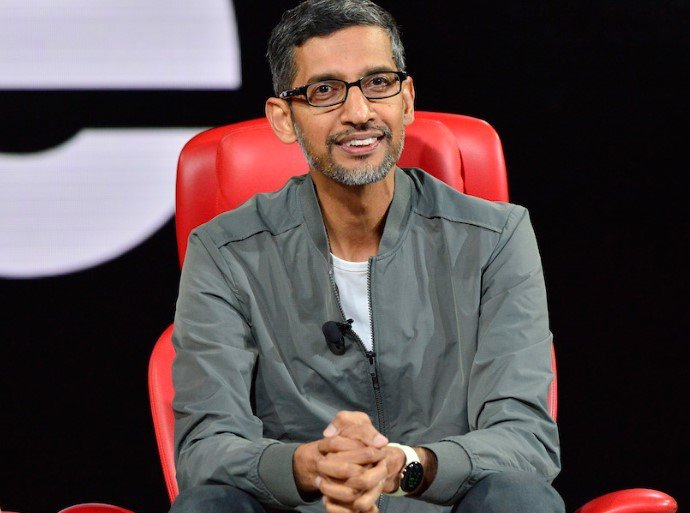Turns out, even bitter rivals can find common ground — especially when the stakes are billions of dollars and a generational shift in computing.
Google Cloud is riding high after an unexpected alliance with OpenAI helped deliver a 32% jump in quarterly revenue, Alphabet revealed during its Q2 earnings call on Wednesday. While headlines often focus on the AI arms race between tech titans, this move suggests a different kind of evolution is taking place — one that’s less about shouting matches and more about shared survival.
Pichai’s Surprise Shout-Out
“OpenAI is now one of Google Cloud’s key infrastructure partners,” said Alphabet CEO Sundar Pichai, his voice steady but unmistakably energized during Wednesday’s call.
That sentence, just a year ago, would’ve sounded far-fetched. Google and OpenAI are two of the largest forces in generative AI — one pushing the Gemini model suite, the other behind ChatGPT and GPT-4.5. Yet here they are, working together.
The backstory? OpenAI began tapping into Google Cloud’s compute power earlier this year. That includes leveraging Google’s Trillium TPUs and sprawling data center network. Until now, OpenAI had been almost exclusively running on Microsoft’s Azure platform.
This new move marks a quiet but meaningful shift in strategy — and in mindset.
A Marriage of Necessity, Not Ideology
At its core, this isn’t a love story. It’s business. And business in AI right now means finding horsepower — anywhere you can get it.
OpenAI, bursting at the seams with user demand and enterprise deployments, needed more compute. Google had it. So the two sides shook hands — behind closed doors — and started working.
The partnership was first reported by Reuters in June, but Wednesday’s earnings call was the first time Alphabet confirmed it publicly.
And make no mistake: the impact was visible. Google Cloud’s revenue for the quarter reached $11.5 billion, a 32% increase compared to the same period last year.
That’s not just growth — that’s acceleration.

What the Numbers Say
The alliance, along with rising interest in AI-native infrastructure, is starting to change how investors and analysts see Google Cloud. Once an underdog trailing far behind AWS and Azure, it’s now being mentioned in the same breath — and that’s not by accident.
Here’s how the top players stack up based on Q2 2025 data:
| Cloud Provider | Q2 2025 Revenue | YoY Growth | Notable AI Clients |
|---|---|---|---|
| Amazon AWS | $25.4 billion | 12% | Anthropic, Meta |
| Microsoft Azure | $23.1 billion | 14% | OpenAI (primary), Palantir |
| Google Cloud | $11.5 billion | 32% | OpenAI, Hugging Face |
There’s still a gap — but the growth curve tells its own story.
Industry Reactions Are… Mixed
News of the collaboration triggered a frenzy of commentary on X and LinkedIn. Many in the AI community saw it as a healthy, even inevitable development.
“Compute is the new oil,” one user wrote. “You go where the rigs are.”
But not everyone’s thrilled.
Critics pointed out the potential risks — mainly around data security and competition dynamics. If OpenAI is running some of its models on Google infrastructure, what does that mean for intellectual property boundaries? And what happens if the relationship sours?
One former Google engineer chimed in with a sarcastic take: “Congrats to Google Cloud on hosting the people who are crushing Search traffic.”
Still, most reactions seemed to reflect pragmatic acceptance more than panic.
Why Google Needed This Too
It’s easy to assume OpenAI came knocking. But Google may have had just as much incentive to open the door.
Despite its head start in AI research, Google’s product rollout has been shaky. The Gemini launch was marred by criticism over image generation flaws and internal disorganization. Meanwhile, ChatGPT continues to dominate public mindshare.
This partnership gives Google something else: credibility.
If the most advanced AI company in the world is using your infrastructure, it’s a signal to the rest of the industry. It says your stuff works. It scales. It matters.
And that can go a long way.
Big Bets on AI Infrastructure
Pichai didn’t stop at the OpenAI news. He also revealed a bump in Alphabet’s capital expenditures — another $10 billion this year, pushing total 2025 CapEx to a whopping $85 billion.
Most of that money is headed toward data centers, semiconductors, and custom TPUs.
The logic is simple:
-
More AI use = More compute demand.
-
More compute demand = Bigger cloud contracts.
-
Bigger cloud contracts = Higher margins (eventually).
Google’s hoping that bet pays off — and OpenAI’s check might just be the first of many.
The New Rules of AI Competition
This deal also speaks to something larger: the maturing of the AI ecosystem. For all the drama — the boardroom ousters, surprise product launches, and model debates — the game is stabilizing.
The new rule? Compete in public, collaborate in private.
Companies may be duking it out over who builds the smartest assistant or the most creative image generator. But behind the scenes, the winners are often the ones who can scale fast and smart. And that sometimes means working with your rival.
Or, at the very least, renting them server space.








